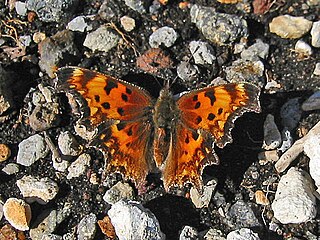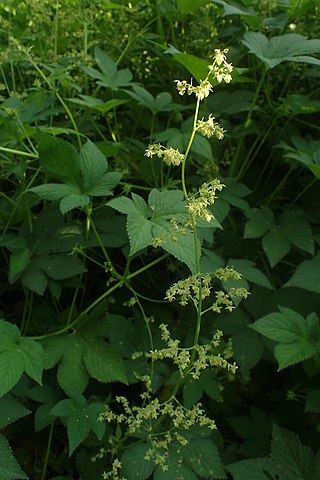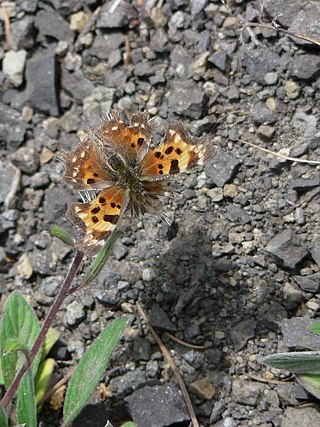A comma (,) is a type of punctuation mark.

The Nymphalidae are the largest family of butterflies, with more than 6,000 species distributed throughout most of the world. Belonging to the superfamily Papilionoidea, they are usually medium-sized to large butterflies. Most species have a reduced pair of forelegs and many hold their colourful wings flat when resting. They are also called brush-footed butterflies or four-footed butterflies, because they are known to stand on only four legs while the other two are curled up; in some species, these forelegs have a brush-like set of hairs, which gives this family its other common name. Many species are brightly coloured and include popular species such as the emperors, monarch butterfly, admirals, tortoiseshells, and fritillaries. However, the under wings are, in contrast, often dull and in some species look remarkably like dead leaves, or are much paler, producing a cryptic effect that helps the butterflies blend into their surroundings.

Polygonia c-album, the comma, is a food generalist (polyphagous) butterfly species belonging to the family Nymphalidae. The angular notches on the edges of the forewings are characteristic of the genus Polygonia, which is why species in the genus are commonly referred to as anglewing butterflies. Comma butterflies can be identified by their prominent orange and dark brown/black dorsal wings.

Hesperia comma, the silver-spotted skipper or common branded skipper, is a butterfly of the family Hesperiidae. It is known as silver-spotted skipper in Europe and common branded skipper in North America where the butterfly Epargyreus clarus, a spread-winged skipper, also has the common name of "silver-spotted skipper".

The hoary comma is a species of butterfly, common in boreal North America from Alaska, across southern Canada to New England and the Maritime Provinces and south to New Mexico from the Rocky Mountains to the Pacific Ocean. The wings have a distinctive ragged edge.

Polygonia interrogationis, commonly called the question mark butterfly, is a North American nymphalid butterfly. It lives in wooded areas, city parks, generally in areas with a combination of trees and open space. The color and textured appearance of the underside of its wings combine to provide camouflage that resembles a dead leaf. The adult butterfly has a wingspan of 4.5–7.6 cm (1.8–3.0 in). Its flight period is from May to September. "The silver mark on the underside of the hindwing is broken into two parts, a curved line and a dot, creating a ?-shaped mark that gives the species its common name."

Humulus japonicus, known as Japanese hops, is an ornamental plant in the family Cannabaceae. Some authorities have it as a synonym of Humulus scandens.

Polygonia is a genus of butterflies with a conspicuous white mark on the underside of each hindwing, hence the common name comma. They also have conspicuous angular notches on the outer edges of their forewings, hence the other common name anglewing butterflies. The related genus Nymphalis also includes some anglewing species; Polygonia is sometimes classified as a subgenus of Nymphalis.

Nymphalini is a tribe of nymphalid brush-footed butterflies. Common names include admirals, anglewings, commas, and tortoiseshells, but none of these is specific to one particular genus.

Polygonia comma, the eastern comma, is a North American butterfly in the family Nymphalidae, subfamily Nymphalinae.

Polygonia egea, the southern comma, is a butterfly of the family Nymphalidae. It is found in southern Europe.

Polygonia oreas, the oreas comma, is a butterfly of the family Nymphalidae. It is found in North America in the mountains from southern British Columbia and southwestern Alberta to northern California.

Nymphalis vaualbum or N. l-album, the Compton tortoiseshell, or false comma, is a species of butterfly in the family Nymphalidae.

Polygonia faunus, the green comma, Faunus comma, or Faunus anglewing is a butterfly of the family Nymphalidae.

Polygonia progne, the gray comma or grey comma, is a species of Polygonia that occurs in North America.

Polygonia satyrus, the satyr comma, is a North American butterfly of the nymphalid family. It is primarily found in western Canada, where it is locally common. It bears a resemblance to Polygonia comma, the eastern comma, with which it is frequently confused. Its caterpillars feed on Urtica dioica - Stinging Nettle.

Spirama helicina is a moth of the family Erebidae first described by Jacob Hübner in 1824. In older texts, the species was classified as morph of Spirama retorta.

Polygonia gigantea, the giant comma, is a butterfly of the family Nymphalidae. It is found in western and central China.

Emma Sarah Hutchinson was a British, Victorian, lepidopterist who authored the 1879 book Entomology and Botany as Pursuits for Ladies and published in The Entomologist's Record and Journal of Variation. She reared butterflies and moths from eggs and her work contributed to understanding of the Lepidoptera life cycle. The summer form of the Polygonia c-album butterfly species, known as the comma, is named hutchinsoni in her honour.


















